Manchurian walnut and features of its cultivation

Recently, people are increasingly trying to grow unusual ornamental plants on their personal plots. Manchu walnut can be safely attributed to this category. But in order to get fruit, you need to properly care for the tree. There are several nuances that are recommended to be taken into account by anyone who is already growing Manchu nuts or is just about to do so.
Description
The Manchurian walnut is a deciduous plant in the Walnut family that can be either a tree or a shrub... In the wild, it is found in the northern regions of China and Korea. In Russia, it can be found on Sakhalin, in some northeastern regions. The life span of a Manchu nut is on average 200 years.
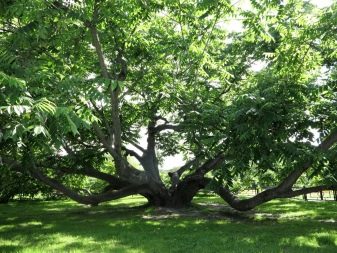

A distinctive feature of this tree is that it grows very quickly. This is possible thanks to the developed root system. The trunk is even, strong, rather massive, reaching from 10 to 25 meters in length. In some regions, it is found only in the form of a small shrub. In young trees, the leaves are light green; as they mature, they acquire a darker color. The crown diameter also gradually increases with age.
Due to the growth rate, the plant begins to bear fruit quickly enough. Before that, the flowering process starts in May. At this time, female and male flowers are formed. It looks very attractive, since the inflorescences themselves are painted in a burgundy shade. The pollination process takes place with the help of the wind. After flowering, fruiting begins. Nuts are collected in bunches of 2-7 pieces. They have a fairly hard shell, colored either dark brown or black. Ripening occurs in September. The first sign of ripeness is the falling of the fruit on the ground. Nuts are medium in size, varying in weight from 10 to 15 g. When properly cared for, one adult tree yields about 30-50 kg.
In taste and properties, the Manchu nut fruit is often compared to a walnut. They really are somewhat similar. The difference from the walnut is the high frost resistance of the Manchurian nut. That is why it is recommended to grow it in the middle lane and northern regions. In addition, the Manchu nut is less whimsical in care and maintenance.
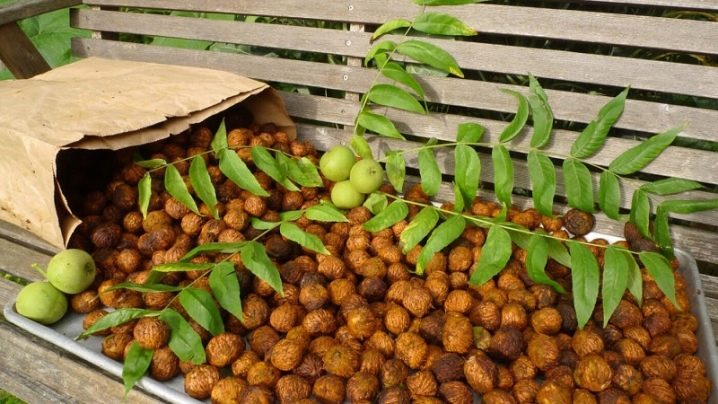
Landing
Manchurian walnut grows well in fertile soil and requires drainage... Loamy or sandy loam soils are also suitable. The only condition is good air permeability. For landing, you should choose a well-lit area, protected from the wind. The distance from other trees and some buildings should be at least 7-10 meters. As already mentioned, the soil in the selected area should be fertile, the acidity level should be moderate. It is recommended to purchase high-quality planting material only in special nurseries. There, young seedlings are more expensive than on the market, but you don't have to worry about their condition.
When buying, you should pay attention to the packaging. The roots of the plant should be covered and well hydrated. The ideal seedling age is 12-24 months.... Starting from the third year of life, the Manchu nut forms a sufficiently powerful root system, which is almost impossible not to damage during transplantation. It can be planted in April or September, depending on the season chosen.There is not much difference here. The most important thing is to choose good weather. Landing is carried out according to the following rules.
- To plant a tree you need to dig a hole about 100 cm deep with a diameter of at least 80 cm.
- A drainage layer is built at the bottom. It is permissible to use expanded clay or broken brick as a material.
- The soil, which will be used for dusting, must mix with compost and add a small amount of wood ash, but not more than 500 g.
- Then you need to shorten the central root to stimulate further growth.... Next, the tree should be lowered into the dug hole and sprinkled with prepared earth. It is important to ensure that the lateral roots of the seedling do not break.
After planting the tree, the soil needs to be tamped and watered a little. Some gardeners recommend building an earthen barrier around the seedling to retain moisture. Then the mulching procedure is carried out. Straw or sawdust works well for this purpose; peat is also acceptable.
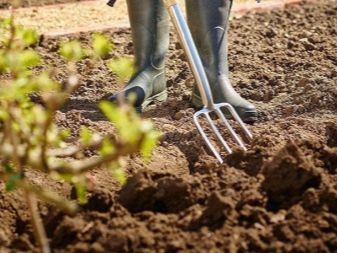
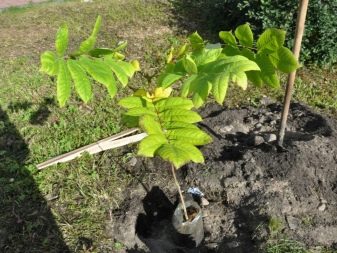
Care
Growing a Manchu nut in a dacha or a personal plot is not particularly difficult. The only condition that should be met is the implementation of comprehensive and timely care. It is identical for almost all regions. In Siberia, in the Urals, as well as in the Leningrad region, it is recommended to cover the trunk for the winter a little earlier than in the Moscow region and the middle lane. In the southern regions, this procedure may not be carried out at all.
It will be more likely to grow a tall tree where there is no severe frost. But the height does not affect the amount of the crop in any way.
The most important thing is to take good care of it at home: water, feed, cut unnecessary branches in a timely manner.
Watering
The plant reacts quite sharply to a lack of moisture, so watering should be controlled especially carefully. This applies primarily to young specimens. As soon as the seedling gets stronger, it is enough to water it no more than once a month. If the soil is mulched, it must be periodically loosened to allow air to enter the root system.
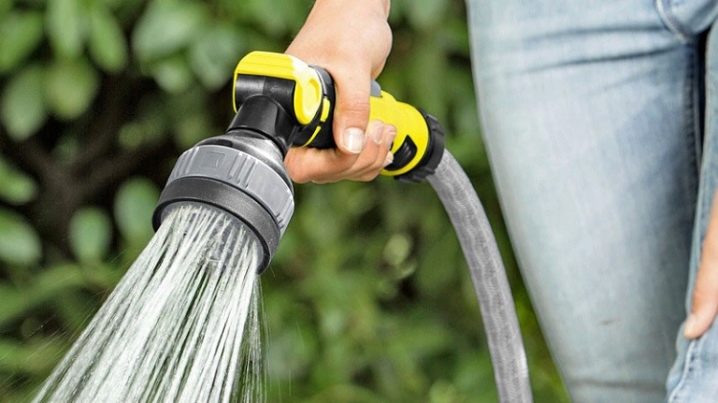
Top dressing
As a fertilizer, it is recommended to make potassium-phosphorus fertilizers. This should be done at the stage of fruit formation. When the sun is active, the trunk can get burned. To prevent this from happening, its base, as well as the main branches that form the skeleton, are recommended to be whitewashed with a lime mortar with the addition of a small amount of clay.
Pruning
The Manchurian walnut is able to form the correct crown on its own. Pruning is recommended exclusively for sanitary purposes, removing diseased and dried branches. But even in this case, it is recommended to adhere to one of the types of crown formation:
- spherical;
- sprawling with a short stem;
- bushy, the basis of which is several skeletal branches at once.
Particular attention should be paid to diseased shoots.
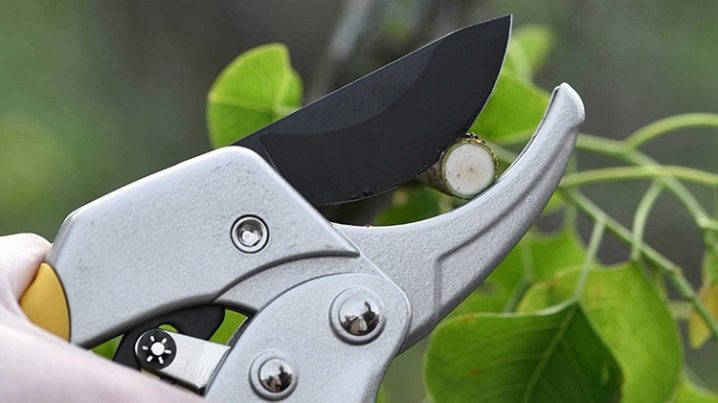
Wintering
With the onset of cold weather, the planted trees insulate. For this, the stem is carefully wrapped in burlap or any other soft covering material.
Reproduction
The easiest and most reliable breeding method is to germinate freshly harvested nuts in the fall. This can be done in the spring, but the autumn planting is good in that it avoids the long process of seed stratification.
Landing is carried out as follows.
- You need to dig a shallow hole. Fertilize the soil with humus.
- Lower the nut onto the edge and sprinkle with earth.
- Next, you should mulch the soil and leave it in this state until spring. The sprout should be expected with the arrival of heat.
The distance between the nuts should be at least 8-10 cm. In this state, the nuts will undergo natural stratification, so in the spring they can already be safely transplanted to a permanent place. The Manchurian walnut is propagated by cuttings.For this purpose, it is necessary to choose a healthy shoot, cut it off (a length of 10-15 cm is sufficient). It must be put in water, wait for the formation of roots, and then move it into the dug hole.
The preparation of the pit is carried out according to the same principles as in the previous case. Propagating by cuttings is somewhat more difficult than growing a tree from seeds.
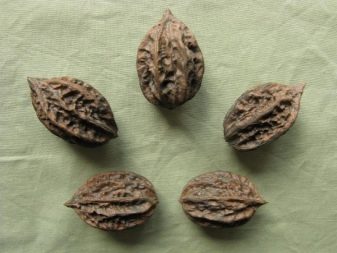
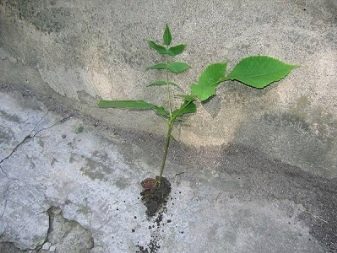
Diseases and pests
Manchurian walnut is resistant to various kinds of diseases and pests. But under some circumstances, exceptions do happen. The most common diseases are the following.
- Fungal infection. When damaged, the leaves turn black and dry out. For treatment, it is recommended to use a solution "Fundazol" or any other drug that contains copper. It is recommended to process it once every two weeks until the disease is completely eliminated.
- Root rot. It manifests itself mainly due to an excess of moisture. In this case, it is necessary to immediately stop watering and arrange for normal air exchange.
Sometimes the tree is attacked by pests. The most common of these is the gall mite. When females lay their eggs, small bumps appear on the leaves. At the time of kidney formation, it is recommended to treat with colloidal sulfur. It is impossible to spray with pesticides, since this will negatively affect the fruits - it will be prohibited to eat them. Another pest is walnut. The insect infects almost all parts of the tree, including the bark, leaves and inflorescences. At the initial stage, you need to remove the affected areas. When running, spray additionally with Chlorophos.
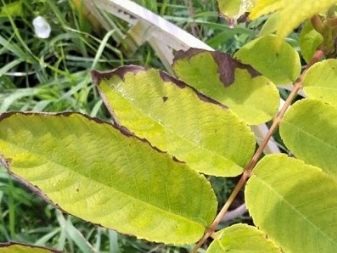

Application in landscape design
Manchurian walnut allows for a good harvest and is also an ideal element for landscaping.
- Young tree, designed in an interesting way.
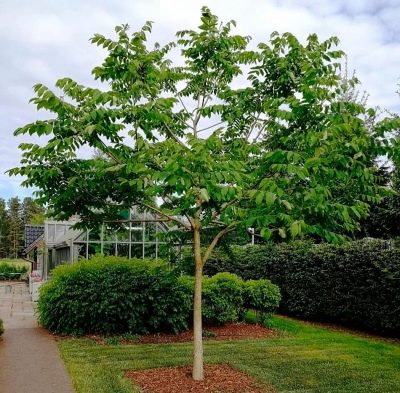
- Matured tree manchu walnut. Looks great, shades windows, does not create negligence.
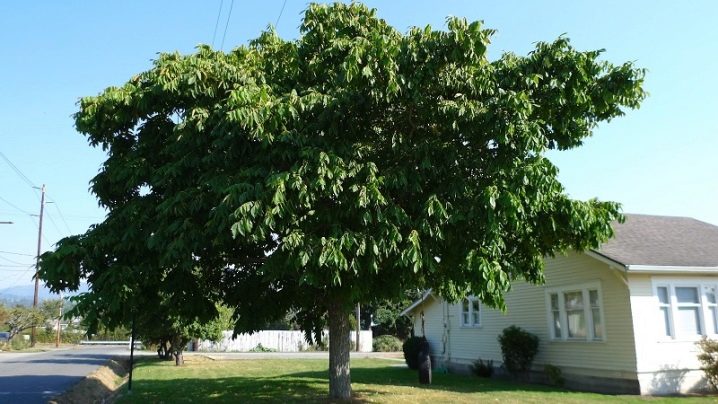
- The Manchurian walnut is also presented, but already in the form of a bush. This option will look great on almost any personal plot. The most important thing is to properly care for the tree so that it has an attractive appearance.
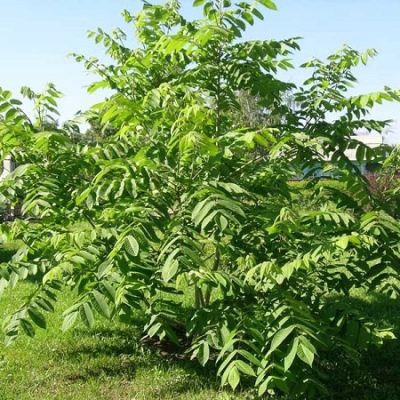



































































The comment was sent successfully.